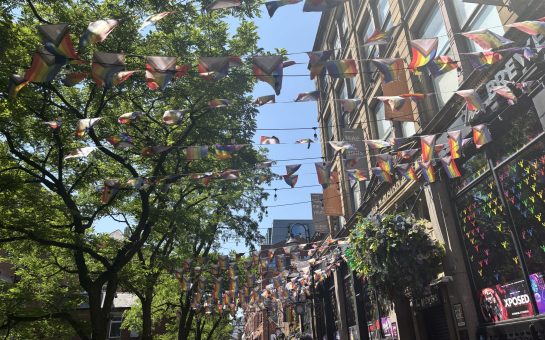Epilepsy Awareness Day is painting the town purple to raise money and kick the ‘stigma’ attached to the neurological condition.
Charities are urging people to ‘Go Purple’ as well as hosting a number of events across the country today to get people talking about epilepsy, an illness that affects 1% of the global population – approximately 600,000 people in the UK.
Epilepsy is characterised by seizures, with no cure or immediate underlying cause, although some people develop the disorder as the result of a brain injury, stroke, brain tumor, or drug and alcohol misuse.
Taking part in Purple Day is Manchester-based theatrical wig-maker, Vicky Homes.
The 40-year-old has suffered from epilepsy since the age of 21 and runs award-winning business ‘Wigs Up North’, creating wigs for theatre, film, television and advertising.
She has tried lots of different epilepsy medicines and has had side effects including tiredness, weight gain and mood swings. Even though her epilepsy has never been controlled, Vicky has never let it stop her controlling her life.
25 more sleeps till Purple Day 2015!! Get on board and help us raise awareness of epilepsy! http://t.co/vC44mhIQtf pic.twitter.com/QXPFf1SNT4
— Epilepsy Action Aust (@Action4Epilepsy) February 28, 2015
“I’ve never let my epilepsy have much of an impact. If I have a seizure at night, I take a day off work but, apart from that, I have never let it stop me from doing what I wanted,” she said.
“I travelled round the world one year and only had two seizures in the entire time. I am really relaxed about how I talk about my seizures at work.
“I usually just say ‘If I fall on the floor, this is what is happening – don’t worry if it does!’ and people are usually fine with it.”
Vicky used to work as a wigs mistress for West End shows and she had her first seizure whilst working in London – on the platform of Charing Cross Station.
Her epilepsy is catamenial – related to her menstrual cycle – and she has seizures every fortnight, usually three absence seizures and two tonic-clonic seizures over two days every two weeks.
“I am taking part in ‘What does epilepsy look like’ to raise awareness,” she said.
“I conquered and achieved lots of my dreams in that year away travelling, and hope my story might help others.
“We need more positive stories of how people can be very successful living with epilepsy.
“I cope with my epilepsy by laughing. My friends and family are great. We all know how serious it is but I can’t – and I won’t – let it stop me doing what I want.”
Purple Day was created in 2008 by then nine-year-old Cassidy Megan, a Canadian girl living with epilepsy.
She came up with the idea as a way to dispel the myths surrounding epilepsy and raise awareness positively.
To mark the occasion, UK charity Epilepsy Action has created a unique project entitled What does epilepsy look like? – collaborating with epilepsy sufferers to document their condition during the last year.
The result is a series of photographic journeys showing the impact of epilepsy on the individual’s daily life – from the bumps and bruises of seizure-related accidents to managing multiple medicines and major life events.
Philip Lee, chief executive at Epilepsy Action, explained that the day would help give people a clearer understanding and address the ‘stigma’ attached to the condition.
“We really hope this campaign inspires other people to share and talk about their epilepsy, their challenges and celebrations, in an authentic and empowering way,” he said.
“Sharing personal stories and powerful images across a range of media helps us to challenge common misconceptions about epilepsy.
“These very individual experiences highlight the triumphs and frustrations of grappling with a complex neurological condition.
“They offer the general public a clearer idea of what epilepsy is, while addressing some of the stigma that sadly still exists.”
Epilepsy Action are also encouraging people to get involved in photos with purple glasses.
To download a pair of purple glasses from the website, click here.



